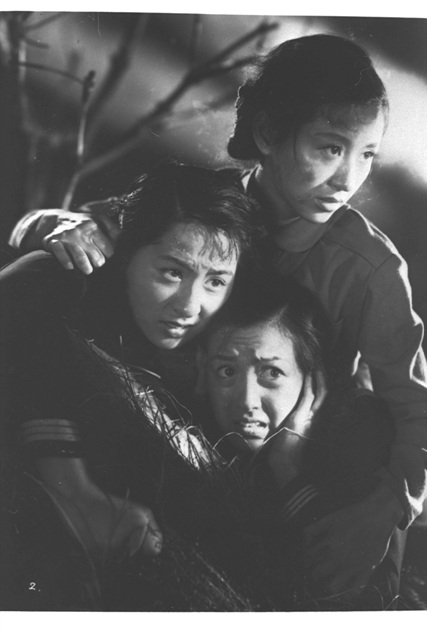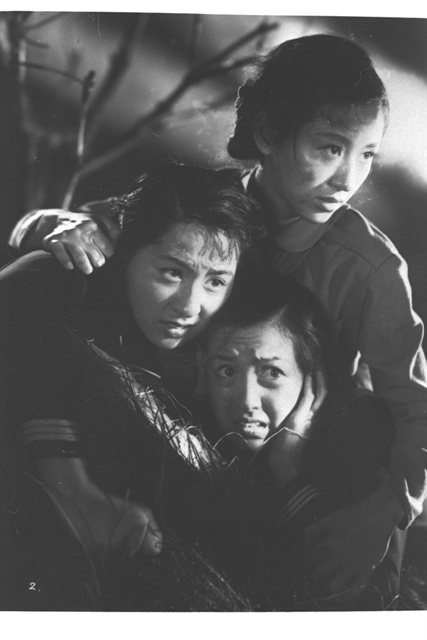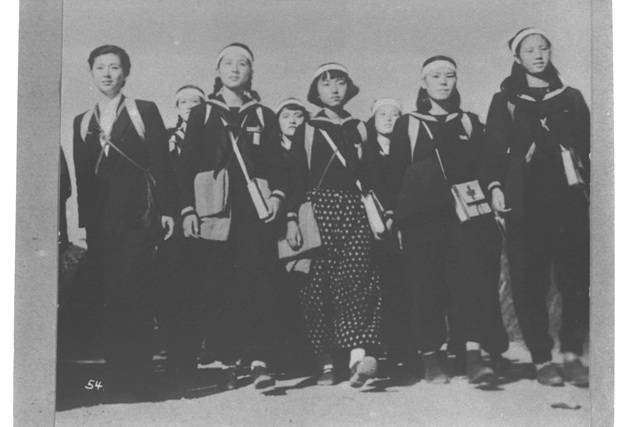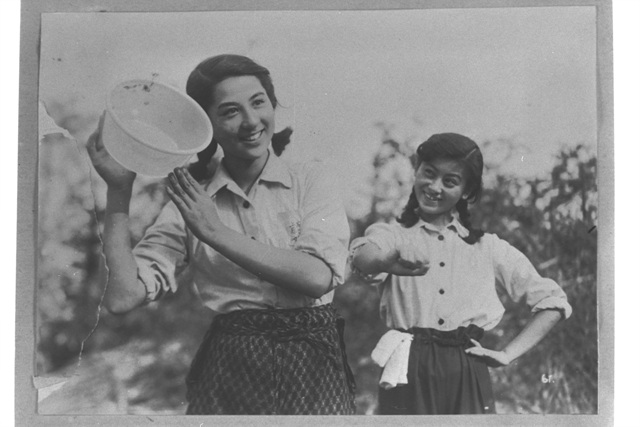16th(2014)
Monument of Star Lilies
IMAI Tadashi
- Japan
- 1953
- 128min
- 35mm
- black and white
- 드라마
SYNOPSIS
Synopsis
Close to the end of the Pacific War, female high school students are mobilized to work for military camps during the Battle of Okinawa. They wear the badge of the cherry tree and white lily on their chest and are called \"the Himeyuri unit\", which means \'lily princess\'.
Program Note
In 1945, with the spirit of defeat cast over Japan before the US Army landed on Okinawa, the country mobilizes even high school
girls for the war. These girls attend to their duties in the middle of the battlefield, from transporting ammunition to nursing the
injured soldiers and cooking. They are all killed during the war, either in air raids or by throwing themselves into the ocean to avoid
flying bullets. Himeyuri, meaning ‘Lily Princess,’ was a name that originated from the fact that the girls were made to wear lily
badges. After the war, Monument of Star Lilies was built in Okinawa to remember these girls.
The Battle of Okinawa and Himeyuri Corps are integral parts of the Pacific War between Japan and the US. At the same time, they
represent the dynamics of the conflict between Japan and the Japanese internal colony of Okinawa, Okinawa’s eventual integration
with Japan, the political relationship within Japan, and gender issues arising from national homogenization after the war. Directed
by IMAI Tadashi, known for his distinctive leftist humanistic style, Monument of Star Lilies assumes an ambivalent attitude
between criticisms of Japanese militarism and the desire to rebuild the nation, and also between atonement for the actions taken
against Okinawan women and the othering of the women.
KAGAWA Kyoko has frequently mentioned that she began to ponder upon the social role of actors after she starred in Monument
of Star Lilies, and that it was a turning point in her acting career. Even now, she consistently participates in memorial events and
projects related to Himeyuri. [HWANG Miyojo]
PROGRAM NOTE
Synopsis
Close to the end of the Pacific War, female high school students are mobilized to work for military camps during the Battle of Okinawa. They wear the badge of the cherry tree and white lily on their chest and are called \"the Himeyuri unit\", which means \'lily princess\'.
Program Note
In 1945, with the spirit of defeat cast over Japan before the US Army landed on Okinawa, the country mobilizes even high school
girls for the war. These girls attend to their duties in the middle of the battlefield, from transporting ammunition to nursing the
injured soldiers and cooking. They are all killed during the war, either in air raids or by throwing themselves into the ocean to avoid
flying bullets. Himeyuri, meaning ‘Lily Princess,’ was a name that originated from the fact that the girls were made to wear lily
badges. After the war, Monument of Star Lilies was built in Okinawa to remember these girls.
The Battle of Okinawa and Himeyuri Corps are integral parts of the Pacific War between Japan and the US. At the same time, they
represent the dynamics of the conflict between Japan and the Japanese internal colony of Okinawa, Okinawa’s eventual integration
with Japan, the political relationship within Japan, and gender issues arising from national homogenization after the war. Directed
by IMAI Tadashi, known for his distinctive leftist humanistic style, Monument of Star Lilies assumes an ambivalent attitude
between criticisms of Japanese militarism and the desire to rebuild the nation, and also between atonement for the actions taken
against Okinawan women and the othering of the women.
KAGAWA Kyoko has frequently mentioned that she began to ponder upon the social role of actors after she starred in Monument
of Star Lilies, and that it was a turning point in her acting career. Even now, she consistently participates in memorial events and
projects related to Himeyuri. [HWANG Miyojo]
Director
-

IMAI TadashiIMAI Tadashi
IMAI Tadashi is a Japanese film director known for social realist filmmaking with a leftist perspective and humanism in the post-war Japan. He dropped out of Tokyo University in 1935 because of his ideological orientation, and joined a film production studio. During the war, he produced Suicide Troops of the Watchtower (1943), a militaristic film set in Korea, against his political convictions. However, after he was fired from Toho Studios for starting labor disputes, he founded an independent film studio and produced educative films on leftist democracy and anti-war films. He emerged as a prominent leftist filmmaker, and presented social problems such as poverty, racial discrimination, and social inequality in Japan until the 1980s.
Credit
- Cast TSUHIMA Keiko, OKADA Eiji, SHIN Kinzo
- Screenwriter MIZUKI Yoko
- Cinematography NAKAO Shunichiro
- Art director KUBO Kazuo
- Editor KONO Akikazu
- Music KOSEKI Yuji
- Sound OKAZAKI Michio





